As we are exposed to nature, we can suffer skin discomfort due to contact with an animal or plant, and each of them leaves their characteristic mark when “attacking”. The severity of pain and itching depends on the animal or plant contacted. In any case, unless the victims of these animals or plants are allergic, usually no medical examination is needed.
A method to prevent these attacks by the potential aggressors is to avoid giving them reasons to come near to you:
- Do not leave sweet products on the table.
- Avoid areas where there may be stagnant water.
- Do not use perfumes.
If you come into contact with animals or plants, be aware that scratching causes histamine release, which will cause greater discomfort for a longer time.
It is also important to detect the type of animal or plant in order to understand its basic aspects and characteristics. The most common symptoms caused are:
Mosquitoes: it is very difficult to run away from them and their bite causes wheals (lumps that appear on the skin due to an insect bite and cause significant itching) or papules (raised spots on the skin), with reddening and swelling. Itching is usually very severe.
Wasps and bees: they also cause wheals, along with reddening, swelling and itching, which is more severe and painful than that caused by mosquito bites. In the case of bee stings, special care must be exercised when removing the stinger, as the poison sac on one end of it can be harmful if it breaks. Wasps, by contrast, do not leave their stingers stuck in the skin.
Jellyfish: the symptoms common to their stings are: pain, burning, swelling and reddening.
Plants (such as nettles): they also cause wheals, along with reddening, swelling and itching, which is more severe and painful than that caused by mosquito bites. In the case of bee stings, special care must be exercised when removing the stinger, as the poison sac on one end of it can be harmful if it breaks. Wasps, by contrast, do not leave their stingers stuck in the skin.
What should you do in case of a sting?
In the event of a bee sting, remove the stinger using tweezers. Some ice wrapped in a towel or a cold compress are useful to reduce discomfort. Don’t place ice directly over the skin, as it might cause a cold burn.
According to the Spanish Society of Primary Care Paediatrics, cream antihistamines should not be used for stings as there is a risk of skin rash under sunlight. Scratching facilitates histamine release and, as mentioned, prolongs discomfort. If the person stung suffers reactions throughout his/her skin, he/she must immediately go to a hospital emergency room.
For stings that are not clearly serious, such as those from mosquitoes, jellyfish and plants, it is advisable to use a product with a soothing action, such as Calmatopic YA-NO-PICA® (NO-MORE-ITCHING), which works thanks to its composition based on plants (LIQUORICE with an anti-irritant effect and LAVENDER with anti-itching effect). Calmatopic YA-NO-PICA® (NO-MORE-ITCHING) is applied by rolling the ball directly over the affected area. The action can be repeated as often as necessary and is for topical use only.

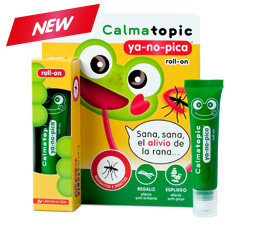
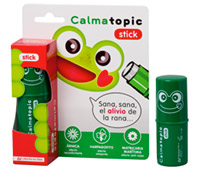
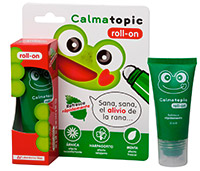






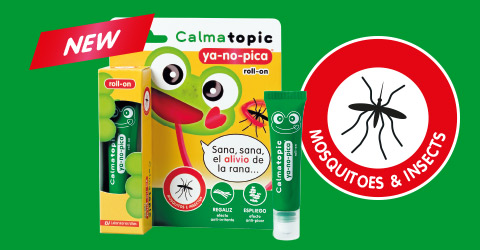
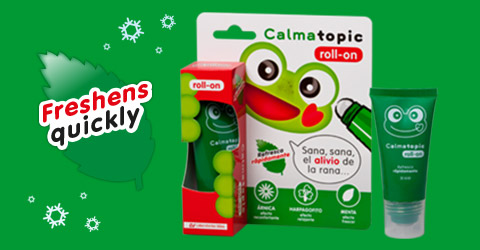


Comments
No Comments
Sorry, comments are closed for this item.